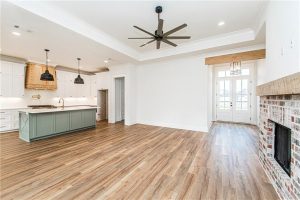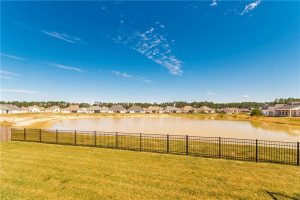The lower the interest rate, the more you can spend on a new home but 2023 is seeing a rise in the rates. If you are in the market for a new home, you want to lock in the lowest rate possible. Trusted lenders are a great resource to have when it comes to your mortgage rate. Here are four things that will help determine your mortgage rate.

Your Credit Score
“When you build and maintain strong credit, mortgage lenders have greater confidence when qualifying you for a mortgage because they see that you’ve paid back your loans as agreed and used your credit wisely. Strong credit also means your lender is more apt to approve you for a mortgage that has more favorable terms and a lower interest rate,” explains Freddie Mac.
A better credit score leads to a lower mortgage rate so you want to make sure you keep a good credit score. If your score needs improving, a lender can help with advice on how to best do this so that when it comes time to get approved, you will get the best rate.
Your Loan Type
“There are several broad categories of mortgage loans, such as conventional, FHA, USDA, and VA loans. Lenders decide which products to offer, and loan types have different eligibility requirements. Rates can be significantly different depending on what loan type you choose,” comments Consumer Financial Protection Bureau.
Keep in mind that there are several types of loans and each loan will offer different terms for each qualified buyer. When looking into a loan, contact your local real estate advisor who can tell you what is available in your specific area and which types of loans it looks like you would qualify for.
Your Loan Term
Just like a loan type, there are also different loan terms that are available. These can all be different according to your situation and the life of your loan.
“When choosing the right home loan for you, it’s important to consider the loan term, which is the length of time it will take you to repay your loan before you fully own your home. Your loan term will affect your interest rate, monthly payment, and the total amount of interest you will pay over the life of the loan,” according to Freddie Mac.
Your Down Payment
“In general, a larger down payment means a lower interest rate, because lenders see a lower level of risk when you have a more stake in the property. So if you can comfortably put 20 percent or more down, do it – you’ll usually get a lower interest rate,” explains the Consumer Financial Protection Bureau.
If you are a homeowner and want to move, you can use the equity from the sale of your home as the down payment. A lender can help you determine the difference if you put a higher down payment down up front.
These are several factors that are looked at and will help with how much your mortgage rate will be. If you are searching for a home, go ahead and find a local sales agent and a local lender who can help you through the process.
Click Here For the Source of the Information.










